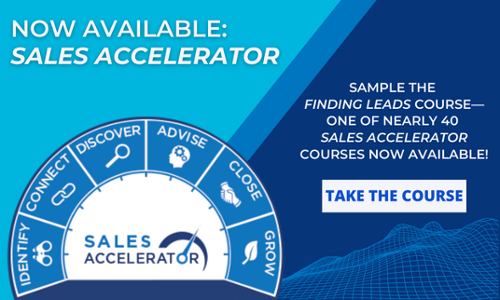
Across all industries, sales managers and account executives spend thousands of hours each year crafting collateral that will support them while they engage with their prospects. If they're particularly astute, they might even try personalizing some of the figures and facts they use to demonstrate why their services are the best options these prospects can choose.
However, just as often, this sales collateral ends up in the prospect's recycling bin. Sometimes, it happens as soon as the salesperson leaves the building.
This isn’t an uncommon issue. A lot of companies struggle to develop sales collateral that’s both compelling and illustrates exactly why prospects need their product.
To top it off, the issue doesn’t lie with the content itself, but with the intent behind it. You could have the most cutting-edge, slickest piece of interactive content anyone has ever seen in an infographic designed by a professional illustrator, but if it doesn’t convey in human terms why they should work with you, it’s not going to do its job.
What your sales collateral needs in order to not get tossed out comes down to five basic elements:
1. Empathy and Understanding
Whenever we help our clients develop their sales tactics, this is usually our first piece of advice. Chances are, your prospect isn’t looking for a solution because everything is fine for them as it currently is. They have a problem they’ve been looking to solve, and they’re considering what you have to sell as a possible solution.
That’s why in a sales environment that’s full of sharks, your job is to make sure your prospect knows you’re a nice, friendly dolphin that’s here to help them rather than out for blood.
If you’ve experienced their position before, tell them about it and be specific if you’re able. Showing that level of empathy will illustrate that you’re genuinely there to help, rather than close a sale so you can hit your numbers for the month.
2. Expertise
This doesn’t necessarily mean getting super technical, either. Have you ever spent time around a person who used way too many technical terms to seem like they know what they’re talking about? Did it just seem like they weren’t completely confident in what they were saying?
The same thing basically happens when you get overly technical in your sales collateral. Sure, it’s okay to talk shop a bit, especially if you’re dealing with a very esoteric industry, but don’t overdo it. Otherwise, your prospect might end up more focused on the technobabble you’re using than the solutions you’re offering for their problems.
3. Experience with Similar Situations
If you’ve been involved in your prospect’s industry for a while, here’s a prime chance to show it. I’m not talking about just sharing the number of years you’ve been in the industry or where you went to college, either. Everyone includes that boilerplate information in their sales collateral, so this is your chance to go the extra mile.
The best way to stand out from the crowd of salespeople sharing the exact same figures of their years of experience or educational background is to use specific examples. If you used to work for a business like theirs, share stories from your time there. Or, if you’ve helped other businesses facing similar problems, walk through how you helped them, especially if they saw stellar results afterward.
4. Evidence You’re Not a Solo Act
Your job as a salesperson isn’t just to sell the product and move on to the next prospect. It’s also not your job to sell only yourself, especially if you have a crack team of experts that will be helping your prospect after they sign on the dotted line.
Instead, introduce that crack team like the industry superheroes they are. Putting the names and faces to their resumes will help your prospect see just how qualified your team is and how that team can provide a holistic solution for the problems they need to solve.
5. Industry Research
If you don’t include industry research in your sales collateral, your client will likely think you’re just trying to flood as many inboxes as possible without caring who you’re talking to. The worst part is they might be right.
Keep yourself updated with the latest news in your prospect’s industry. If there’s a major shift in the industry that could impact their business, let them know about that. You could potentially even utilize it in other parts of your sales process, such as when you’re developing your VBR.
Conclusion
Chances are, your sales collateral isn’t going to be the linchpin for closing your next sale. But, it more than likely will leave a lasting impression on your prospects on what you can offer them and how you can help solve the problem they have.
Keep their needs, along with a sense of your empathy and expertise, at the forefront of your sales collateral, and you’ll create a piece that leaves a lasting impression and shows you have the best solution for their needs.
*Editor's Note: This blog was originally written in 2014 and has since been updated.




